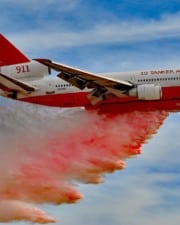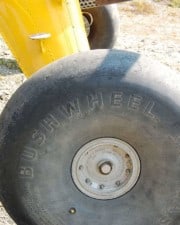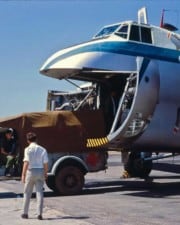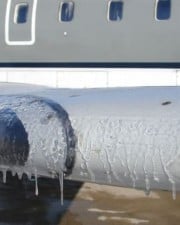We have laid out a basic primer on the various types of airplane in use today. This is a handy guide to help you learn about the virtues of each type of airplane. Although each model has its own specific capabilities and features, this guide can help you better understand the different categories of airplanes.
Aircraft designs have come a long way since the Wright Brothers made their first flight near Kitty Hawk, North Carolina. Computer technology is allowing manufacturers to develop planes that are more reliable, aerodynamic, and powerful than ever.
When you make the comparisons and consider the strengths and limitations of each type, it is easier to decide which airplane you might like to fly or fly in on a temporary or permanent basis.
We have done all the homework for you by carefully assembling an outline of each type for your convenience. Please peruse the information and start enjoying the flight like never before. Let’s start with types of passenger airplanes, and then we will move on to types of small airplanes.
A. Types of Commercial Airplanes
1. Jumbo Passenger Jets
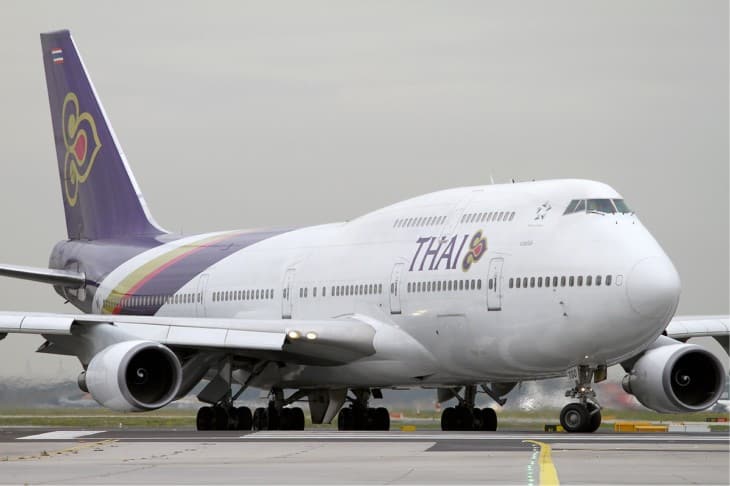
The Boeing 747 was the first wide-body commercial jet to earn the moniker “Jumbo Jet.” Boeing never imagined that the subsonic 747 would continue to hold popularity, in light of the supersonic jets in development at the time. Nevertheless, Boeing went on to sell over 1,554 of these jumbo passenger jets, which can be quickly converted into passenger or cargo planes.
Airbus is Boeing‘s only major rival in Jumbo Jet sales. Although it is only four decades old, Airbus has taken a marginal lead in market share. The chief weakness of Airbus is that their A380 models have steadily lost popularity among airliners because of their massive size. The profitability of such a massive jet is limited unless you are flying from a large central hub to a large central hub.
2. Mid-Size Passenger Jets

Mid-size passenger jets, such as the Airbus 350-1000, have a narrower body. Although they can still carry over 350 passengers, these planes can’t match the 600-passenger capacity of a Boeing 747 in a single class configuration. The Airbus A380 further dwarfs that number with its 853-passenger capacity in a single class configuration. But the Boeing 737 recently expanded its range by 900 nautical miles to reach 3,000 for transcontinental flights.
Of course, these mid-size commercial jets are desirable among airliners because they sustain greater profitability in seasonal routes and on smaller flights. The lower price tag also makes them attractive from an investment standpoint. When you consider the flexibility of configuring the Airbus 380 or even a Boeing 787 for different routes, it makes sense to hedge against market trends by choosing a model that is more flexible.
3. Light Passenger Jets
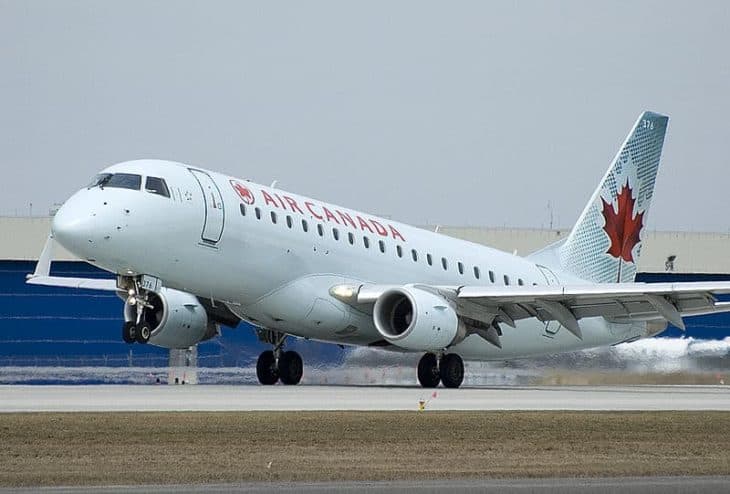
In the light passenger jet range, the seating for passengers is typically 60 to 100. The Embraer 175 can travel 1,800 miles at a cruising speed of 545 miles per hour. The smaller size of light passenger jets makes them the ideal choice for economy airlines. The seating is evenly divided into two sections on each side of a center aisle. Larger jets have three sections and two aisles.
The light passenger jets are popular for regional routes. Because they consume less fuel and require less investment, an owner can quickly reap a profit by flying their plane to popular destinations from larger central hubs. A plane from Los Angeles to Las Vegas, for example, would be an easy way of generating revenue off the investment without facing the strict regulations imposed by flights over seas.
4. Passenger Turboprops

Although turboprops are not as reliable as jet engines, aircraft are much safer than ground transportation because they are built for reliability. In addition, once the planes reach cruising altitude, there are not many factors which can negatively influence planes that fly over the weather. The friction and geography of the terrestrial landscape and weather are the hardest burdens for automotive engineers to face.
Turboprop engines are more fuel-efficient than jet engines, however. Since fuel is one of the greatest expenses for an airliner, this makes them a better investment. A passenger turboprop can also operate and take off from shorter runways. This opens up the doors to flying a greater variety of short flights to meet the market demands. The larger prop planes, such as the Bombardier Q400, can carry up to 80 passengers.
5. Cargo Airplanes

Cargo planes have a larger scope than any of the other types because they are a conversion of the subtypes. As stated, the Boeing 747 can be converted into a cargo plane if desired. But Boeing also manufacturers jets specifically for cargo, such as the Boeing Dreamlifter. The Dreamlifter hauls up to 65,000 cubic feet of cargo. This is only defeated by the 78,000 cubic feet of the Airbus Beluga XL.
At the bottom of the range, Cessna makes cargo planes on a small propeller-driven aircraft design. This aircraft can carry 340 cubic feet or 12 passengers. As stated, the propeller-driven airplanes will reach remote areas with smaller airstrips. This makes them busier than the larger flights because they can fill a lot of voids in the chain of distribution. Airplanes age better when used because the aluminum, otherwise, deteriorates.
B. Types of Private Jets
6. VLJ (Very Light Jets)
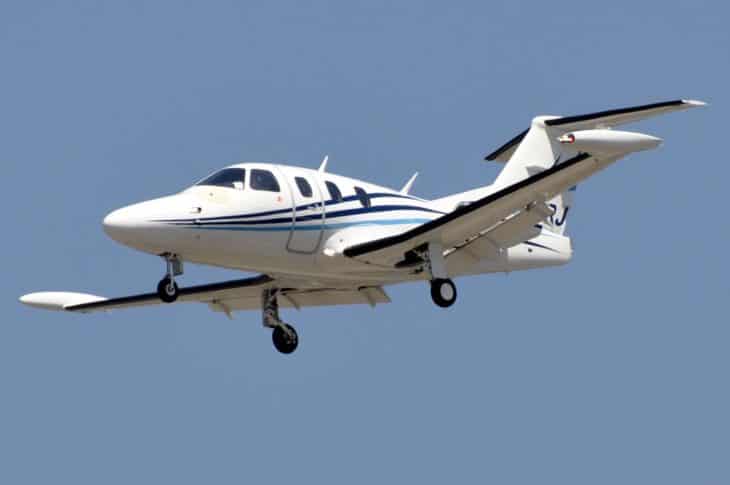
Very light jets are primarily for short trips to regional destinations. They typically offer seating for up to eight passengers. The advantage of these jets is that you can hire a single pilot to fly them instead of an entire flight crew. Some models also boast of low operating costs that are on par with turboprop planes. They are the ideal solution for reaching more remote destinations that airlines avoid.
These planes are mainly used for flights that are 40 to 80 minutes in duration. As such, they do not offer a separate lavatory compartment but only an emergency style toilet with a privacy curtain. These planes are still a relatively new concept. The first design, the Cessna Citation Mustang, wasn’t produced until November of 2006. These jets are the lightest business jets on the market for air taxi services.
7. Light Business Jets

Some light business jets are capable of transcontinental flights of 2,400 nautical miles or more. The definition of a light business jet is that the maximum takeoff weight is 20,000 lbs. compared to just half that for very light jets. And most light business jets can still maintain an average cruising speed of about 500 mph. This makes them on par with the larger commercial jets but ideal for private trips.
These jets usually have a dedicated lavatory compartment and offer more cabin space than VLJ models. They are also loaded with all the technology that you could ever need to conduct business meetings remotely while in flight. Satellite phone, Wi-Fi, and XM radio communications are all onboard. They also feature cabin pressurization that you won’t find in many smaller aircraft. Cabin pressurization is necessary to sustain oxygen levels at higher altitudes.
8. Mid-Size Business Jets
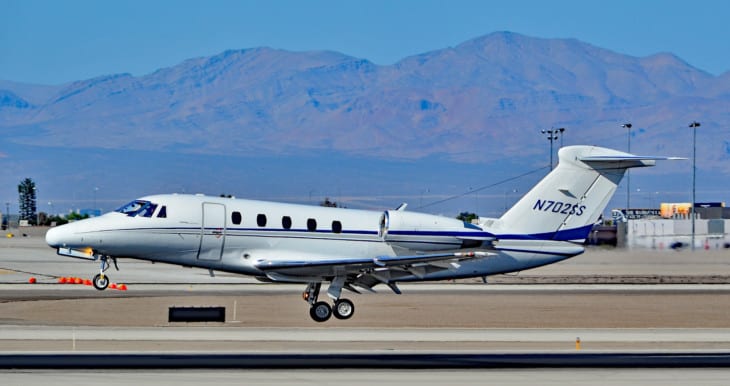
While the typical VLJ and light jet carry a maximum of six passengers, a mid-size business jet offers comfortable seating for up to 10 passengers. You will find that the luxuries and amenities grow with each class. While they all hover around 500 miles per hour at cruising speed and offer the ability to land on smaller runways, a mid-size jet has larger parties in mind for longer transcontinental trips.
Take a non-stop flight in a range of 2,000 to 3,000 nautical miles and work comfortably in the larger pressurized cabin. Indeed, there is even a subtype of mid-size business jets called super mid-size. These planes are fuel-efficient and designed to travel even longer distances faster. A super mid-size can travel as much as 580 mph over a distance of 3,600 miles or more.
9. Heavy Business Jets
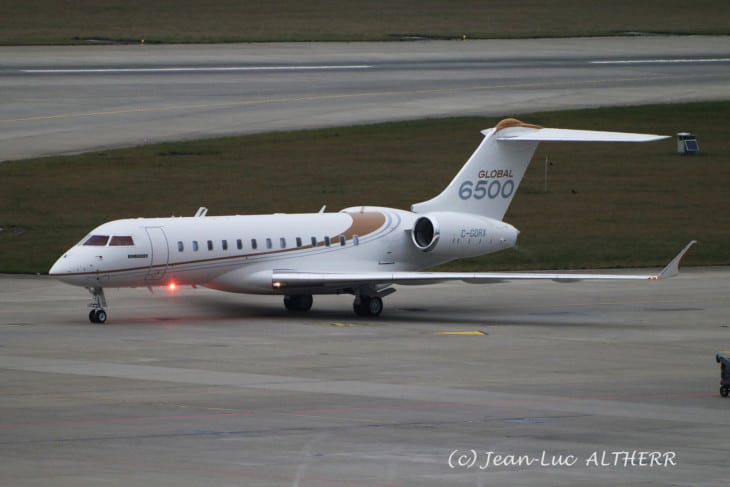
These jets are often converted from larger commercial airline jets into luxury liners. The advantage of a heavy business jet is the ability to conduct full-scale meetings and conferences. They accommodate anywhere from 10 to 18 passengers and are able to fly at high altitudes above the weather for maximum comfort and reliability. They also have single flight ranges that exceed 6,000 miles over a span of six to eight hours.
The Boeing 747 8 VIP is an example of a conversion from commercial passenger to a private luxury business jet. The large cabin space is what makes these planes so attractive. A business can literally build offices and work departments inside the jet as they would in a building. The focus on luxury and convenience is just a perk to make the workers more productive during long and critical business flights.
10. Military Jets

Although it would not be legal for you to own a fully armed F 18 hornet, military jets are among the best performance airplanes on the market. Most military jets are supersonic fighter jets that are used to engage with enemy combatants or to bomb strategic targets in a top-secret mission. These jets cost billions of dollars to develop. They are deployed from air force bases and navy carriers.
It is amazing to see them land on the tiny airstrip of the carrier by hooking a cable. Most also have the capability to refuel in the air without landing. They are often flown in flight formations that are led by a single jet in the same manner that birds migrate in V-shaped formations. U.S. fighter jets are renowned for their ability to maneuver and roll in acrobatic precision.
C. Types of Propeller Planes
11. Private Single Engine
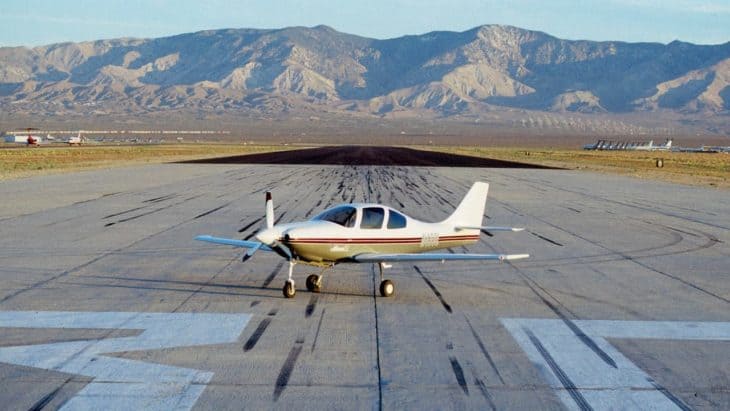
Although you would think that the propeller-driven engine has been outmoded by modern-day jet engines, think again. Over 27 percent of the flights are still by propeller-driven airplanes. This is because over 80 percent of U.S. domestic flights are only one to two hours long. Why go through all the hassles of boarding a jet when you can take a small private propeller plane to even the remotest destination.
Private propeller planes are especially popular in remote areas of the country, such as Alaska. In many regions of Alaska, there is no other method of transportation unless you have a dog sled. A single-engine propeller plane is suitable for distances of 100 to 500 miles. To go any further than that, you will probably need a turboprop engine that is rated for travel of 1,200 miles or more.
12. Twin Turboprops
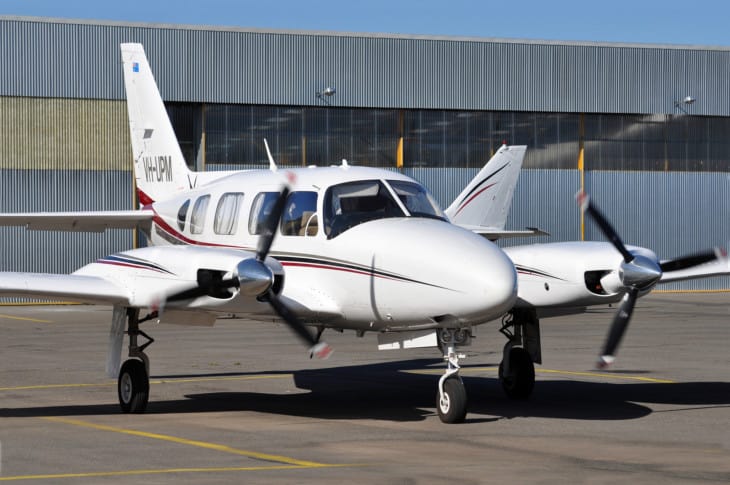
Although the operating cost of a turboprop is more on par with a jet, they often have a larger hauling capacity than many light jets. The turboprop jet engines can also dive and climb straight up without stalling out. The other key advantage of the twin turboprop is its ability to land in grassy fields or other makeshift runways. Most twin turboprop planes can also be flown with just a single pilot.
The turboprop engine is a lot more like a jet engine. However, instead of using the exhaust gases, themselves, to propel the aircraft, the shaft is rotated to turn a variable pitch propeller. The downside of a propeller is that it loses its efficiency at higher speeds. This is why they are not used in supersonic aircraft; although they can still perform well at speeds of 0.6 Mach.
13. Aerobatic
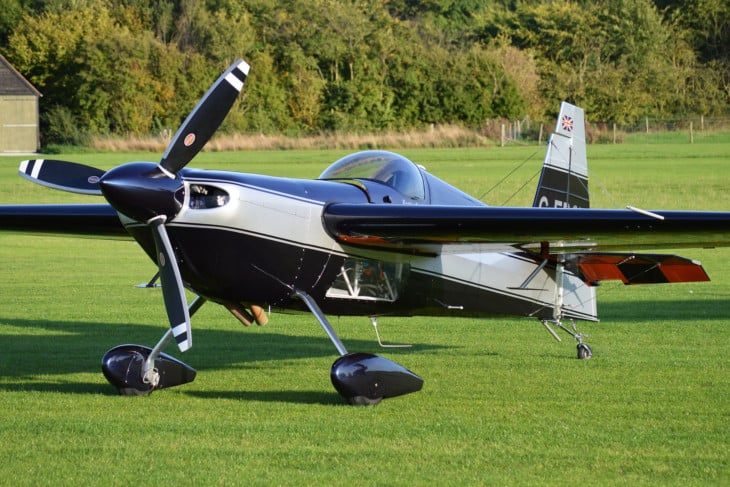
Many former air force pilots find themselves missing the thrill of high-speed maneuvers in fighter jets. While it may be impossible for them to ever get their hands on a fighter jet again, an aerobatic plane is a suitable substitute. These planes are fast and perform stunts in the air, such as dives and rolls. Because they are light and easy to maneuver, they are often involved in choreographed drills.
In order to properly fly an aerobatic stunt plane, the pilots require hours and hours of advanced training. If they have a military background, this can reduce the learning curve significantly. Accustoming oneself to the g-forces and disorientation that occurs under intense acrobatic performances is something that is much easier if they went through years of flight school and spent significant time in military fighter jets.
14. Amphibious
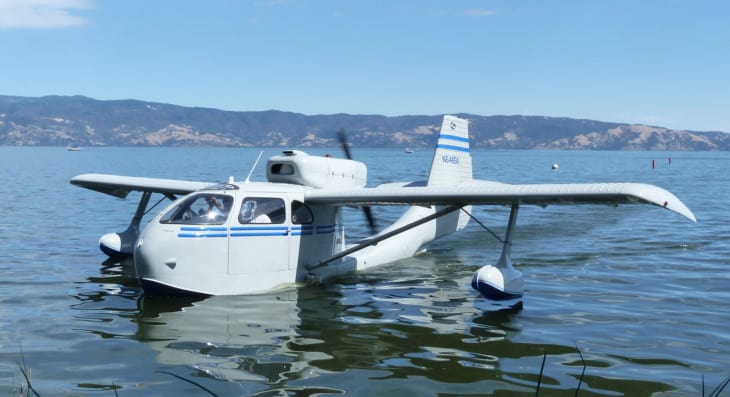
Amphibious aircraft are specially designed to take off and land in freshwater lakes and seas. Some planes can even be fitted with keels that are reinforced to handle a landing on terrain covered by snow or ice. Tourism to remote areas may also require the use of an amphibious aircraft. In fact, some models of amphibious aircraft also have retractable wheels that allow them to land on ordinary landing strips.
The downside of an amphibious plane is that the models which boast of a full range of landing capabilities are heavier and require greater maintenance. It is always better to use a plane for dedicated purposes by landing on either land or water. Positioning the wheels for a terrestrial or aqua landing is another problem that pilots face in convertible planes. If the wheels aren’t adjusted properly, damage will ensue.
15. Military Turboprops

The military is still developing and using turboprop planes for cargo transport and light attack fighters. Because the turboprops provide better fuel economy and are cheaper to manufacture and deploy into regions where light-duty fighters are needed, they are still preferred over jets in some applications. Nevertheless, the Embraer Super Tucano still carries an amazing 3,300 pounds of weaponry. Because the military has a limited operating budget, turboprops are practical.
And because they have the advantage of modern engineering, military turboprops are still just as lethal as jet fighters. Furthermore, turboprop engines provide stronger forward thrust than jets do. Although a jet can operate more efficiently at Mach speeds, Mach speeds are rarely needed for most combat missions or supply transports. The turboprops also perform much better at lower altitudes than jet engines. And most missions require low altitude combat fighters.
Related Posts


















